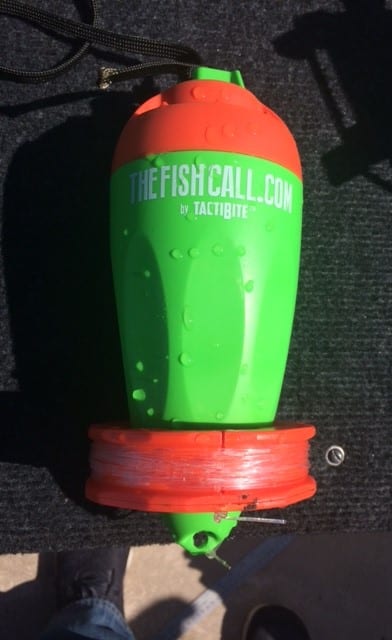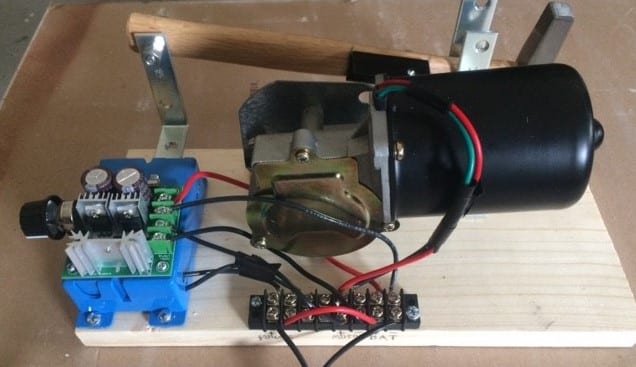By Jake Bussolini
In last month’s issue of The Anger, I introduced my first thoughts about noise, as it is affecting our fishing experiences. I promised to continue this series as I moved forward with my investigations. I need to make it very clear here that I am not trying to endorse or sell any products that I mention, but in some cases, it is not possible to properly discuss equipment without product identity.
This month I want to discuss two specific items that have grabbed my attention. The first of these new items is the Fish Call, shown below which grabbed my attention when I first saw it in the TV program Shark Tank.
This relatively small waterproof, battery operated container floats on the surface and emits three different underwater sounds associated with scrimp and schooling bait fish. The advertised method of using this fish attractor is to throw it into the water either from a shore position or from an anchored boat. After a few minutes, the intent is to cast lures toward the unit which would by that time start attracting predator fish.
I decided not to use the unit in that manner but to troll it about 10 feet behind my boat, while I trolled six baited rods several feet behind the unit. If the sounds emitted, brought in predator fish toward the attractor, they should also be close enough to my baited lines to draw the attention of the fish.
My technical background does not permit me to draw any meaningful conclusions based on only a few samples, and at this time I do not yet have sufficient data to draw those conclusions. What I do know is that based on three short two hour fishing experiences, I caught more than twice the number of fish than I have been catching in the same water over the past several weeks. In each case I caught at lease one catfish in excess of 15 pounds, two hybrids of legal size and several bass in excess of three pounds. This is not considered a sample size sufficient to draw any conclusions, but to me it is interesting enough to continue vigorously with more testing, which I will continue to report in this article.
In the last issue I also mention the practice of Thumping, which is gaining a lot of attention among experienced anglers. The theory started with anglers thumping the bottom of their boats to draw the attention of fish in waters deeper than 30 feet. U Tube videos are filled with testimonials of thumping, working wonders, especially with fresh water hybrids and several other species. I decided that I could wait no longer and I designed my own, battery operated thumper machine. Since I fish alone most of the time, I needed the automatic function provided by battery operation. The prototype of my unit is shown below.
The thumping frequency can be varied by an electronic control, and the machine operates from the boats 12volt battery. The unit is approximately the size of a shoe box and I suppose that with some attention I could make it smaller, but why? I will install my new design on my boat as soon as the weather warms and I will surely report my results in the next issue of The Angler.
I have always tried to relate the subject of my writings to the science of the sport of fishing. The Hydrowave, which I previously mentioned and this new Fish Call equipment easily fit into several scientific theories because they are emitting sounds of other underwater species such as shrimp, shad or crawfish. I have no problem believing that a school of 10,000 shad swimming in close proximity to each other, do indeed make a sound. If this new equipment emits something that duplicates that sound, then it is very possible that the noise will attract predator fish.
The reason that Thumping has garnished my attention is that I cannot rationalize what underwater source could possibly generate a noise sounding like a thumping sound. That is the science that puzzles me, and I will continue my attempt to rationalize an answer that makes scientific sense.
Jake Bussolini is a freelance writer that has published several books about freshwater fishing. His books can be seen at www.booksbyjake.com.


